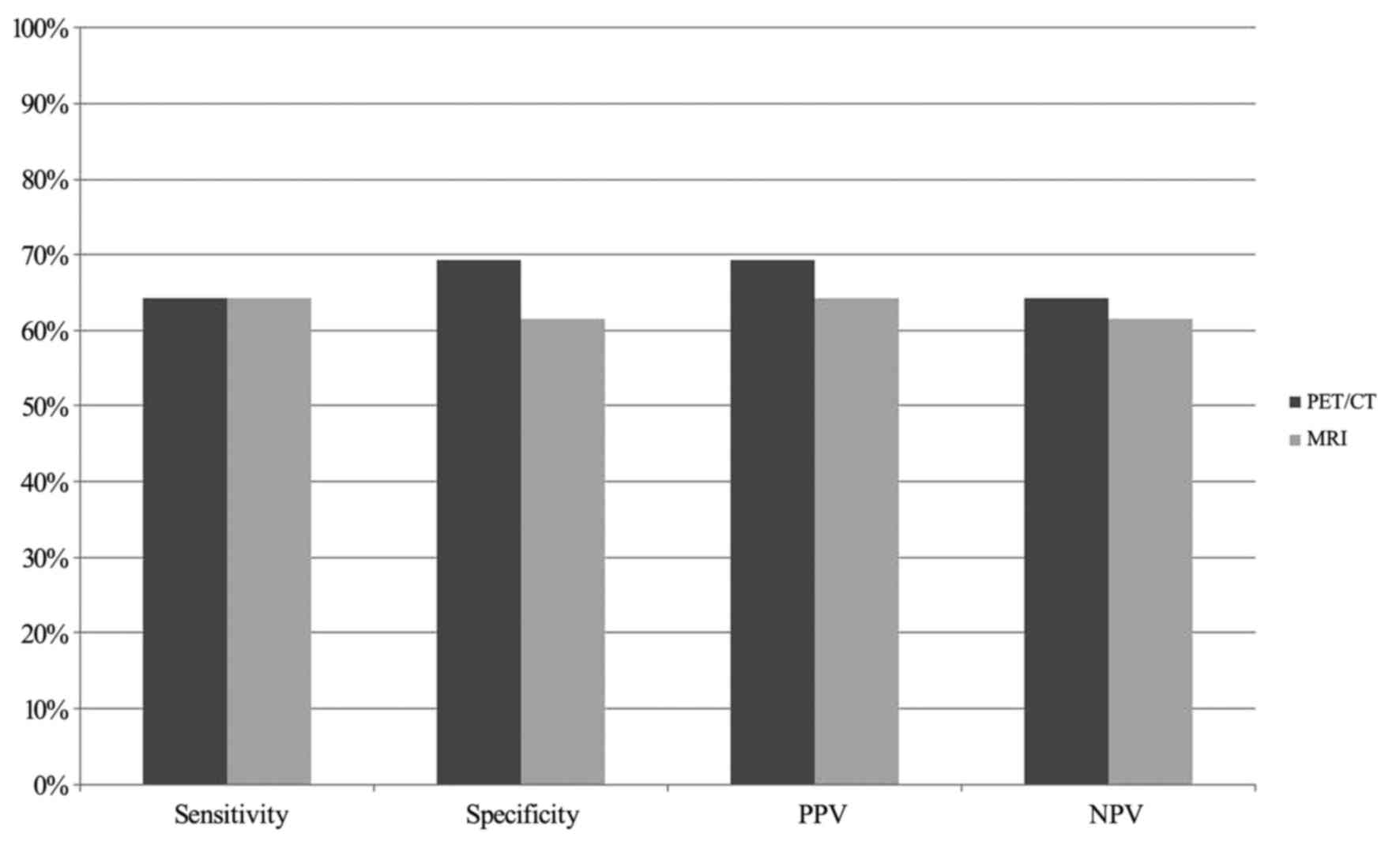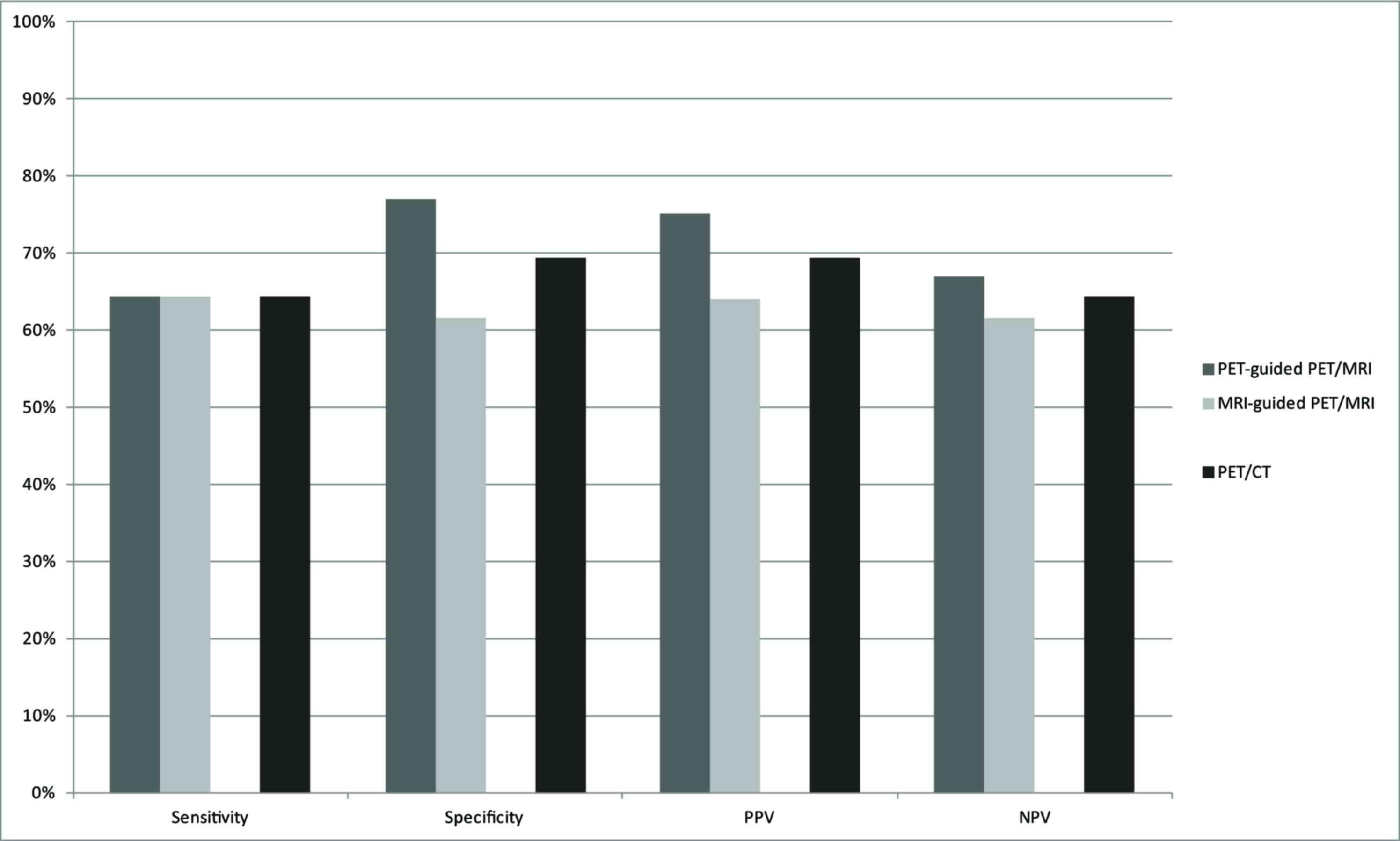|
1
|
Parkin DM, Bray F, Ferlay J and Pisani P:
Estimating the world cancer burden: Globocan 2000. Int J Cancer.
94:153–156. 2001. View
Article : Google Scholar : PubMed/NCBI
|
|
2
|
Hiddemann W and Bartram CR: Die Onkologie.
2nd edition. Springer Berlin Heidelberg; Berlin: 2010, View Article : Google Scholar
|
|
3
|
Piver MS, Rutledge F and Smith JP: Five
classes of extended hysterectomy for women with cervical cancer.
Obstet Gynecol. 44:265–272. 1974.PubMed/NCBI
|
|
4
|
Ishikawa H, Nakanishi T, Inoue T and
Kuzuya K: Prognostic factors of adenocarcinoma of the uterine
cervix. Gynecol Oncol. 73:42–46. 1999. View Article : Google Scholar : PubMed/NCBI
|
|
5
|
Kjorstad KE, Kjolvenstvedt A and Strickert
T: The value of complete lymphadenectomy in radical treatment of
cancer of the cervix, stage IB. Cancer. 54:2215–2219. 1984.
View Article : Google Scholar : PubMed/NCBI
|
|
6
|
Noguchi H, Shiozawa I, Sakai Y, Yamazaki T
and Fukuta T: Pelvic lymph node metastasis of uterine cervical
cancer. Gynecol Oncol. 27:150–158. 1987. View Article : Google Scholar : PubMed/NCBI
|
|
7
|
Inoue T and Morita K: The prognostic
significance of number of positive nodes in cervical carcinoma
stages IB, IIA, and IIB. Cancer. 65:1923–1927. 1990. View Article : Google Scholar : PubMed/NCBI
|
|
8
|
Selman TJ, Mann C, Zamora J, Appleyard TL
and Khan K: Diagnostic accuracy of tests for lymph node status in
primary cervical cancer: A systematic review and meta-analysis.
CMAJ. 178:855–862. 2008. View Article : Google Scholar : PubMed/NCBI
|
|
9
|
Follen M, Levenback CF, Iyer RB, Grigsby
PW, Boss EA, Delpassand ES, Fornage BD and Fishman EK: Imaging in
cervical cancer. Cancer. 98 Suppl 9:S2028–S2038. 2003. View Article : Google Scholar
|
|
10
|
National Comprehensive Cancer Network
(NCCN): NCCN Clinical practice guidelines in oncology: Cervical
cancer, 10/25/12 update. National Comprehensive Cancer Network.
2013.
|
|
11
|
Park W, Park YJ, Huh SJ, Kim BG, Bae DS,
Lee J, Kim BH, Choi JY, Ahn YC and Lim DH: The usefulness of MRI
and PET imaging for the detection of parametrial involvement and
lymph node metastasis in patients with cervical cancer. Jpn J Clin
Oncol. 35:260–264. 2005. View Article : Google Scholar : PubMed/NCBI
|
|
12
|
Choi HJ, Roh JW, Seo SS, Lee S, Kim JY,
Kim SK, Kang KW, Lee JS, Jeong JY and Park SY: Comparison of the
accuracy of magnetic resonance imaging and positron emission
tomography/computed tomography in the presurgical detection of
lymph node metastases in patients with uterine cervical carcinoma:
A prospective study. Cancer. 106:914–922. 2006. View Article : Google Scholar : PubMed/NCBI
|
|
13
|
Eifel PJBJ and Thigpen JT: Cancer of the
cervix, vagina, and vulva, Cancer: principles and practice of
oncology 1433–75. 1997.
|
|
14
|
Son H, Kositwattanarerk A, Hayes MP,
Chuang L, Rahaman J, Heiba S, Machac J, Zakashansky K and
Kostakoglu L: PET/CT evaluation of cervical cancer: Spectrum of
disease. Radiographics. 30:1251–1268. 2010. View Article : Google Scholar : PubMed/NCBI
|
|
15
|
Jiang H, Xie KY and Cao BR: Clinical
analysis of lymph node metastasis in 695 cases of early invasive
cervical carcinoma. Zhonghua Yi Xue Za Zhi. 91:616–618. 2011.(In
Chinese). PubMed/NCBI
|
|
16
|
Winter R, Petru E and Haas J: Pelvic and
para-aortic lymphadenectomy in cervical cancer. Baillieres Clin
Obstet Gynaecol. 2:857–866. 1988. View Article : Google Scholar : PubMed/NCBI
|
|
17
|
Wright JD, Dehdashti F, Herzog TJ, Mutch
DG, Huettner PC, Rader JS, Gibb RK, Powell MA, Gao F, Siegel BA and
Grigsby PW: Preoperative lymph node staging of early-stage cervical
carcinoma by [18F]-fluoro-2-deoxy-D-glucose-positron emission
tomography. Cancer. 104:2484–2491. 2005. View Article : Google Scholar : PubMed/NCBI
|
|
18
|
Sironi S, Buda A, Picchio M, Perego P,
Moreni R, Pellegrino A, Colombo M, Mangioni C, Messa C and Fazio F:
Lymph node metastasis in patients with clinical early-stage
cervical cancer: Detection with integrated FDG PET/CT. Radiology.
238:272–279. 2006. View Article : Google Scholar : PubMed/NCBI
|
|
19
|
Williams AD, Cousins C, Soutter WP,
Mubashar M, Peters AM, Dina R, Fuchsel F, McIndoe GA and deSouza
NM: Detection of pelvic lymph node metastases in gynecologic
malignancy: A comparison of CT, MR imaging, and positron emission
tomography. Am J Roentgenol. 177:343–348. 2001. View Article : Google Scholar
|
|
20
|
Beckmann MW: Interdisziplinäre S
2-Leitlinie für die Diagnostik und Therapie des Zervixkarzinoms.
Informationszentrum für Standards in der Onkologie (ISTO). Deutsche
Krebsgesellschaft. 2008.(In German).
|
|
21
|
Balleyguier C, Sala E, Da Cunha T, Bergman
A, Brkljacic B, Danza F, Forstner R, Hamm B, Kubik-Huch R, Lopez C,
et al: Staging of uterine cervical cancer with MRI: Guidelines of
the European Society of Urogenital Radiology. Eur Radiol.
21:1102–1110. 2011. View Article : Google Scholar : PubMed/NCBI
|
|
22
|
Shreve PD, Anzai Y and Wahl RL: Pitfalls
in oncologic diagnosis with FDG PET imaging: Physiologic and benign
variants. Radiographics. 19:61–77. 1999. View Article : Google Scholar : PubMed/NCBI
|
|
23
|
Zaspel U and Hamm B: Aktueller Stellenwert
von MRT, CT und PET in der Diagnostik des Zervixkarzinoms. Der
Onkologe. 12:854–868. 2006. View Article : Google Scholar
|
|
24
|
Ryu SY, Kim MH, Choi SC, Choi CW and Lee
KH: Detection of early recurrence with 18F-FDG PET in patients with
cervical cancer. J Nucl Med. 44:347–352. 2003.PubMed/NCBI
|
|
25
|
Schlemmer HP, Pichler BJ, Schmand M,
Burbar Z, Michel C, Ladebeck R, Jattke K, Townsend D, Nahmias C,
Jacob PK, et al: Simultaneous MR/PET imaging of the human brain:
Feasibility study. Radiology. 248:1028–1035. 2008. View Article : Google Scholar : PubMed/NCBI
|
|
26
|
Schmand M, Burbar Z, Corbeil J, Zhang N,
Michael C, Byars L, Eriksson L, Grazioso R, Martin M, Moor A, et
al: BrainPET: First human tomograph for simultaneous (functional)
PET and MR imaging. J Nucl Med Meet. 48 Suppl:45P2007.
|
|
27
|
Lee SI, Catalano O and Dehdashti F:
Evaluation of gynecologic cancer with MR imaging, 18F-FDG PET/CT
and PET/MR imaging. J Nucl Med. 56:436–443. 2015. View Article : Google Scholar : PubMed/NCBI
|
|
28
|
Barnwell J, Raptis CA, Mcconathy JE,
Laforest R, Siegel BA, Woodard PK and Fowler K: Beyond whole-body
imaging: Advanced imaging techniques of PET/MRI. Clin Nucl Med.
40:e88–e95. 2015. View Article : Google Scholar : PubMed/NCBI
|
|
29
|
Chopra S, Dora T, Dhanda S, Rangrajan V
and Shrivastava Kishore S: PET-MRI based molecular imaging as a
response marker in cervical cancer: A systematic review. Curr Mol
Imaging. 2:66–76. 2013. View Article : Google Scholar
|
|
30
|
Bailey DL, Antoch G, Bartenstein P,
Barthel H, Beer J, Bisdas S, Bluemke D, Boellaard R, Claussen CD,
Franzius C, et al: Combined PET/MR: The real work has just started.
summary report of the third international workshop on PET/MR
Imaging; February 17–21, 2014, Tübingen, Germany. Mol Imaging Biol.
17:297–312. 2015. View Article : Google Scholar : PubMed/NCBI
|
|
31
|
Grueneisen J, Schaarschmidt BM, Heubner M,
Aktas B, Kinner S, Forsting M, Lauenstein T, Ruhlmann V and Umutlu
L: Integrated PET/MRI for whole-body staging of patients with
primary cervical cancer: Preliminary results. Eur J Nucl Med Mol
Imaging. 42:1814–1824. 2015. View Article : Google Scholar : PubMed/NCBI
|
















